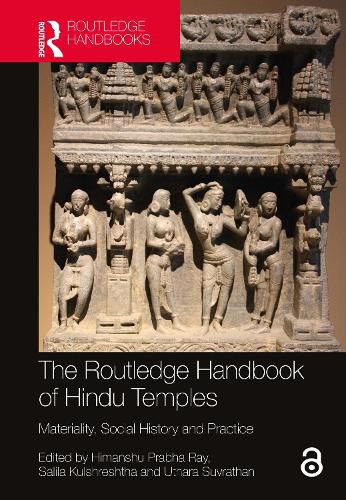Readings Newsletter
Become a Readings Member to make your shopping experience even easier.
Sign in or sign up for free!
You’re not far away from qualifying for FREE standard shipping within Australia
You’ve qualified for FREE standard shipping within Australia
The cart is loading…






This handbook is a comprehensive study of the archaeology, social history and the cultural landscape of the Hindu temple. Perhaps the most recognizable of the material forms of Hinduism, temples are lived, dynamic spaces. They are significant sites for the creation of cultural heritage, both in the past and in the present.
Drawing on historiographical surveys and in-depth case studies, the volume centres the material form of the Hindu temple as an entry point to study its many adaptations and transformations from the early centuries CE to the 20th century. It highlights the vibrancy and dynamism of the shrine in different locales and studies the active participation of the community for its establishment, maintenance and survival.
The illustrated handbook takes a unique approach by focusing on the social base of the temple rather than its aesthetics or chronological linear development. It fills a significant gap in the study of Hinduism and will be an indispensable resource for scholars of archaeology, Hinduism, Indian history, religious studies, museum studies, South Asian history and Southeast Asian history.
Chapters 1, 4 and 5 of this book are available for free in PDF format as Open Access from the individual product page at www.routledge.com. They have been made available under a Creative Commons Attribution-Non Commercial-No Derivatives 4.0 license.
$9.00 standard shipping within Australia
FREE standard shipping within Australia for orders over $100.00
Express & International shipping calculated at checkout
This handbook is a comprehensive study of the archaeology, social history and the cultural landscape of the Hindu temple. Perhaps the most recognizable of the material forms of Hinduism, temples are lived, dynamic spaces. They are significant sites for the creation of cultural heritage, both in the past and in the present.
Drawing on historiographical surveys and in-depth case studies, the volume centres the material form of the Hindu temple as an entry point to study its many adaptations and transformations from the early centuries CE to the 20th century. It highlights the vibrancy and dynamism of the shrine in different locales and studies the active participation of the community for its establishment, maintenance and survival.
The illustrated handbook takes a unique approach by focusing on the social base of the temple rather than its aesthetics or chronological linear development. It fills a significant gap in the study of Hinduism and will be an indispensable resource for scholars of archaeology, Hinduism, Indian history, religious studies, museum studies, South Asian history and Southeast Asian history.
Chapters 1, 4 and 5 of this book are available for free in PDF format as Open Access from the individual product page at www.routledge.com. They have been made available under a Creative Commons Attribution-Non Commercial-No Derivatives 4.0 license.